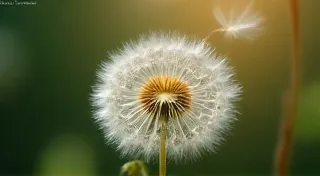From Blossom to Bounty: A Visual Guide to Watermelon Development
There's a certain magic to heirloom gardening. It’s more than just planting seeds; it's connecting with history, preserving traditions, and tasting flavors that have often been lost to the relentless march of modern agriculture. It’s akin to discovering a beautifully restored antique accordion—a testament to a bygone era of craftsmanship and artistry, breathing music back into the world. I remember finding my grandfather’s accordion tucked away in the attic, coated in dust and seemingly lifeless. The bellows were cracked, the keys stuck, but the sheer beauty of the rosewood and the intricate mechanics hinted at a rich story. Restoring it was a labor of love, a slow unveiling of forgotten elegance. Growing heirloom watermelons evokes a similar feeling; it's a journey into a heritage of flavor and a quiet appreciation for the skill of those who came before.
This guide isn't just about how to grow watermelons; it's a visual journey—a botanical timeline—from the first delicate blossom to the satisfying heft of a ripe, juicy fruit. Let's trace that journey together.
The Genesis: From Seed to Sprout
Like the meticulous tuning of an accordion’s reeds, the early stages of watermelon growth require patience and precision. Begin with well-draining soil, rich in organic matter. Watermelons are heavy feeders, needing plenty of nutrients. Start seeds indoors about four weeks before your last expected frost, or direct sow them once the soil has warmed to at least 70°F (21°C). Heirloom varieties like 'Charleston Gray,' 'Black Diamond,' and 'Arkansas Traveler' offer unique flavors and colors that you simply won't find in modern hybrids. They’re often less predictable in terms of yield, but the rewards – that first bite of truly exceptional watermelon – are worth it.

The Blooming Phase: A Promise of Sweetness
The emergence of blossoms is the first real sign of promise. Watermelons are monoecious, meaning they have separate male and female flowers. The male flowers, appearing first, are pollen-producing, while the female flowers have a small, immature watermelon at their base – the future fruit. Bees are your best friends here; they’re essential for pollination. If you don't have many bees in your garden, you might need to hand-pollinate the flowers, transferring pollen from the male to the female using a small brush. This is surprisingly meditative, almost like carefully cleaning a set of accordion bellows, ensuring each part functions perfectly.
Fruit Set: The Tiny Watermelon Begins
Once a female flower is successfully pollinated, it withers, and a tiny watermelon begins to form at its base. This stage is critical. Pay close attention to watering and fertilizing. Consistent moisture is vital, but avoid overwatering, which can lead to root rot. Early on, the little watermelon will be a vibrant green, practically invisible against the foliage. It’s humbling to think that this tiny speck holds the potential for such a large and refreshing fruit.
Rapid Growth: A Race Against Time
This is the period of explosive growth. The watermelon swells rapidly, drawing nutrients and water from the plant. The tendrils, those delicate, spiraling structures, anchor the plant and help it climb. Observe these tendrils carefully; their health is indicative of the overall plant vigor. Like the complex internal mechanisms of an antique accordion, the watermelon's growth is a marvel of natural engineering.

The Yellow Spot: A Sign of Ripening
This is where the real detective work begins. The iconic ground spot – that creamy-yellow patch where the watermelon rests on the soil – is a crucial indicator of ripeness. Initially, this spot is white. As the watermelon matures, it transitions to a pale yellow. This subtle color change marks a shift in the fruit’s metabolism, signaling that the sugars are concentrating and the starches are converting. It’s a subtle sign, much like the faint patina on a well-loved accordion, a testament to years of use and appreciation.
Tendril Browning: The Final Clue
Another reliable indicator of ripeness is the browning and drying of the tendrils closest to the watermelon. While not a foolproof method (some varieties retain green tendrils even when ripe), it’s a strong signal that the fruit has reached its peak. Don’t rush this process; patience is key to experiencing the full potential of your heirloom watermelon.
The Sound Test: A Gentle Thump
The "thump test" is a bit more subjective, but experienced watermelon growers often rely on it. Give the watermelon a gentle thump. A ripe watermelon will produce a deep, hollow sound. An unripe watermelon will sound higher-pitched and more solid. This technique takes practice, but it’s a fun way to engage with your harvest and connect with generations of farmers who have come before.

Harvest and Enjoyment: A Sweet Reward
Once the ground spot is yellow, the tendrils are browning, and the thump test reveals a deep, hollow sound, it's time to harvest your watermelon. Carefully cut the watermelon from the vine, leaving a few inches of stem attached. The first bite of that juicy, sweet flesh is a reward for your patience and care—a tangible connection to the past and a celebration of the bounty of nature. Like the vibrant music produced by a restored antique accordion, a truly exceptional heirloom watermelon is a testament to the power of tradition and the enduring beauty of simple pleasures.
Growing heirloom watermelons isn’t just about producing a delicious fruit; it’s about appreciating the history, the craftsmanship, and the enduring magic of the natural world.





